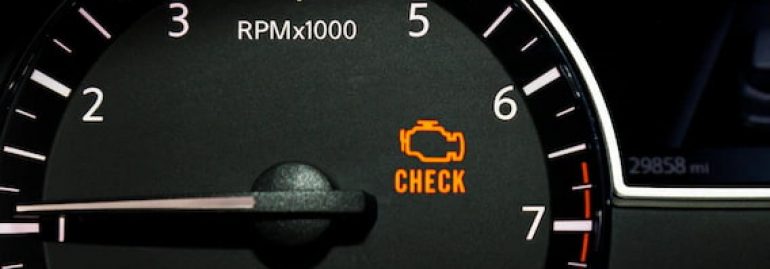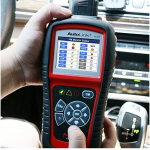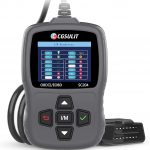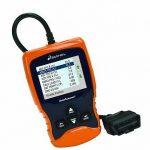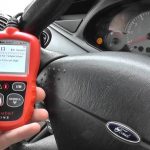Are you unsure of what your car’s engine diagnostic codes mean? If so, you’re not alone. This article will help you understand the meaning of the most common codes, including P0, P1, P0420, and P0300. Learn what these codes mean and how to fix them. Hopefully, you’ll be able to avoid the costly mistakes of not recognizing and solving engine problems before they cause your car’s malfunctions.
P0
If your car has the P0 engine diagnostic code, the problem is most likely with the powertrain system. It indicates a malfunction by giving more specific information based on the last character of the code. For example, P0301 means a misfire in cylinder #1. P0303 means that cylinder #3 or #4 has not fired. P0306 means that cylinder #5 or #6 is misfiring. Lastly, P0316 is a more general code that means that your car has a misfire less than 1,000 revolutions after starting.
Regardless of the reason for a P0 engine diagnostic code, you should always contact your vehicle’s manufacturer to make sure you are dealing with the right problem. While you’re at it, check your vehicle’s service manual for a list of all the codes. The manual will tell you which systems, components, and circuits to test. You can also look up specific DTCs in an online search engine. You can also use the search function to look for specific error codes.
If you notice any of these codes, you should contact a mechanic. This is important for a number of reasons. Some codes do not tell you what parts need to be replaced and require further diagnostics to determine the cause. A common reason for P0 engine diagnostic codes is that the sensor that detects the problem is malfunctioning. If the fault persists, it is probably related to the transmission. It can be caused by a number of different issues, including a faulty speed sensor.
If the O2 sensor cannot adjust air to fuel ratio properly, you may get a P0133 code. If this occurs, you should check the wiring for any loose or poor connections. If the condition is reversible, a P0131 code will indicate a problem with the powertrain control module. This code will also be triggered if the mass air flow sensor is under-reporting. These codes are important because they help your mechanic diagnose the problems that are causing P0 engine diagnostic codes in your vehicle.
P1
The P1 engine diagnostic code can indicate a problem with the powertrain system. Its first two characters indicate an overall issue with the powertrain, while the third character gives more detailed information. Each type of problem has a different interpretation. To identify the specific issue, you must have the correct codes. Here are some common reasons that your car may have P1 codes. To fix it yourself, follow these simple tips:
When it comes to finding the right code reader, it is important to make sure that the product you are purchasing is compatible with the make and model of your car. An inexpensive scan tool may only read generic P0 codes or not even recognize manufacturer-specific P1 faults. Some scan tools sold in the North American market are designed to read only Ford, GM, and Chrysler P1 codes, but they don’t have coverage for some Asian or European makes.
The P1 code is similar to the P0 code in some ways, but they have different meanings. P0 is for the PIN-coded service, while P1 is for the diagnostic trouble codes for powertrains. In fact, P1 codes may be related to your car’s powertrain or transmission. The P1 engine diagnostic code is typically accompanied by other codes, such as a C-code or a DTC.
A common misfire code is P0300. While it represents the same failure on all vehicles, it can be confusing to figure out what is causing it. The service manual can provide you with valuable information on the issue. You can read the code yourself by using a car code reader or a professional OBD2 software program. The code list is defined by EOBD or OBD-II. Vehicle manufacturers can also add their own codes. Hence, you can use the list of generic codes in a vehicle’s diagnostic code.
P0420
If you’ve noticed a rotten egg smell coming from your exhaust pipe, it may be a symptom of a faulty catalytic converter. Excess sulfur in the fuel tank can also cause the problem. A mechanic will use an OBD-II scanner to retrieve the trouble code. If you’re unsure, read on to learn more. P0420 engine diagnostic codes can mean a number of different problems.
Catalytic converter failure is the most common cause of DTC P0420. Catalytic converters become less effective as they age. Additionally, thieves tend to steal catalytic converters from cars. Exhaust leaks are another common cause of P0420. The exhaust system may have holes or cracks, or the gasket in the exhaust manifold may be leaking. If you suspect your car is experiencing P0420, make an appointment with a mechanic immediately.
Another possible cause of the P0420 code is a clogged catalytic converter. Catalytic converters do not normally wear out, but if yours is showing this code, it could be an inefficient catalytic converter. A clogged catalytic converter could cause frequent stalls and hard starts. In addition to affecting driveability, the clogged catalytic converter may fail an emissions inspection. If you have a regular smog inspection, fixing the problem is vital.
There are a number of things you can try to fix your car before your mechanic can determine the real cause of the problem. Before you can fix a P0420 engine diagnostic code, other codes must be addressed first. For example, a faulty catalytic converter is the most common cause of P0420. Checking for leaks and damage in the exhaust system is a good way to clear up this code and make sure everything is working properly.
P0300
When your car gives you the P0300 engine diagnostic code, you need to know what causes it. There are a few reasons it might be exhibiting this code, such as old spark plugs, inadequate compression or a vacuum leak. Depending on the type of code and the make and model of your car, the repair cost will vary significantly. Most auto repair shops charge between $75 and $150 per hour to diagnose the code.
One of the most common causes of this fault is misfiring. This can result in engine drivability problems or even a check engine light. In the first instance, it is likely that your fuel injectors are causing the misfire. Make sure you are not removing or replacing any wiring. Another cause is a mechanical problem – loose electrical connectors, vacuum hoses and oxygen sensors may be malfunctioning.
If the car’s check engine light remains on after a few hours, the spark plugs may be damaged or have blown. A faulty computer may be the cause of the code, but there are some simple solutions that can be applied by yourself. To learn how to do an auto repair yourself, watch YouTube videos. Regardless of whether you have auto repair experience or not, code P0300 should never be ignored. While it may be tempting to fix the problem yourself, you need to understand what caused it. You can check the spark plugs, the EGR valve, the faulty ignition coil, and more. Ultimately, you must diagnose the problem and take action.
The other reason your car may have a P0300 code is that it needs to be checked by a mechanic. P0300 indicates your engine is misfiring in multiple cylinders. The mechanic will need to know the exact cause before he can fix your car. However, it can be an indication of something more serious. If you don’t have a regular mechanic, you can try using Openbay to find a mechanic in your area.
P0175
When an engine develops the P0175 engine diagnostic code, it means the system is not burning fuel correctly. This can lead to premature clogging of catalytic converters, burned spark plugs, and increased unburned fuel. This error code is accompanied by symptoms including rough idling, lack of power, hesitation while accelerating, and stalling while driving. You can use a diagnostic tool to find out what’s causing the code and fix it.
In case you’re unsure what this error code means, here’s how it works. A P0175 engine diagnostic code means the fuel/air ratio is too rich or too lean in Bank 2. This is equivalent to cylinder number 1 on a six-cylinder engine, cylinder number two on an eight-cylinder car, and so on. A P0175 code doesn’t mean that you cannot drive, but if you do, it could cause severe damage to your engine, catalytic converter, and other parts.
A faulty fuel injector is the most common cause of a P0175 code. When a fuel injector fails to deliver the correct amount of fuel to the engine, too much fuel is pumped into the engine. Other reasons for a P0175 code include a fuel leak, a damaged or broken fuel injector, and a vacuum line leak. A faulty fuel injector can also be dirty or damaged.
A rich condition is caused by a number of problems, including faulty fuel injectors, high fuel pressure, and high fuel pressure. In such a case, the ECU will compensate by reducing the IPW. Typically, the IPW is around 3%. In some cases, the fuel trim is too rich and DTC P0175 will illuminate the malfunction indicator lamp. A number of reasons may cause this code, and you’ll need to consult a professional for diagnosis.


